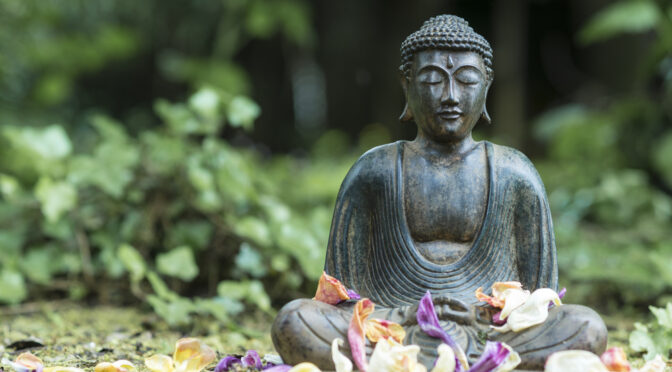Zen is the Japanese practice of meditation and mindfulness. Here are some great, handpicked stories to bring joy to your sense of enlightenment.
The Buddha
There once was two instructors of the Buddha’s teachings. One, Tanzan, was strict in his life style, never drinking intoxicants or eating after 11 o’clock in the morning. The other, Unsho, was loose in his discipline, eating whenever and drinking whatever he pleased.
“Hello, brother,” Tanzan greeted him. “Won’t you have a drink?”
“I never drink!” exclaimed Unsho solemnly.
“One who does not drink is not even human,” said Tanzan.
“Do you mean to call me inhuman just because I do not indulge in intoxicating liquids!” exclaimed Unsho angrily. “Then if I am not human, what am I?”
“A Buddha,” answered Tanzan.
A Mother’s Advice
There was a Shogun master that was also famous Sanskrit scholar known through the lands. He would often give lectures to students and travelers. One day his mother wrote to him and said,
“Son, I do not think you became a devotee of the Buddha because you desired to turn into a walking dictionary for others. There is no end to information and commentation, glory and honor. I wish you would stop this lecture business. Shut yourself up in a little temple in a remote part of the mountain. Devote your time to meditation and in this way attain true realization.”
How To Write A Chinese Poem
A famous Japanese poet was once asked how to compose a Chinese poem.
“The usual Chinese poem is four lines,” he explains. “The first line contains the initial phase; the second line, the continuation of that phase; the third line turns from this subject and begins a new one; and the fourth line brings the first three lines together. A popular Japanese song illustrates this:
Two daughters of a silk merchant live in Kyoto.
The elder is twenty, the younger, eighteen.
A soldier may kill with his sword.
But these girls slay men with their eyes.”
How The Trees And Grass Became Enlightened
One day a fifty year old student of the Tendai school came to the master Shinken. The master rarely received visitors and almost never answered their questions.
“I have studied the Tendai school of thought since I was a little boy, but one thing in it I cannot understand. Tendai claims that even the grass and trees will become enlightened. To me this seems very strange.”
“Of what use is it to discuss how grass and trees become enlightened?” asked Shinkan. “The question is how you yourself can become so. Did you ever consider that?”
“I never thought of it in that way,” marveled the old man.
“Then go home and think it over,” finished Shinkan.
Every Minute Zen
Zen students must learn under their masters for at least ten years before they may teach others. Tenno was recently made a master and visited his friend Nan-in, who was also a master. The day they greeted each other was rainy, and Tenno was wearing wooden clogs and had an umbrella. Later, while taking tea Nan-in asked, “I suppose you left your wooden clogs in the vestibule. I want to know if your umbrella is on the right or left side of the clogs.”
This confused Tenno and he had no immediate answer. He realized in that moment he had lost his Zen. He studied for sic more years to find and keep his Zen.
Fire-Poker Zen
An old master used to tell his students about an old woman that owned a teashop. He praised her deep understanding of Zen. He encouraged them to seek her out. When she saw the students coming, she could immediately tell if they had come for tea or not.
If they came for tea she would serve them delicious tea with grace. If they came for teachings she would take them around the back. There she would strike them with a red hot poker. Nine out of ten could not escape her beatings.
Flower Shower
Subhuti was a disciple of the Buddha. He comprehended emptiness, the view point that nothing exists except in its relationship of subjectivity and objectivity.
One day Subhuti, in a mood of sublime emptiness, was sitting under a tree. Flowers began to fall about him.
“We are praising you for your discourse on emptiness,” the gods whispered to him.
“But I have not spoken of emptiness,” said Subhuti.
“You have not spoken of emptiness, we have not heard emptiness,” responded the gods. “This is the true emptiness.” And blossoms showered upon Subhuti as rain.
Everything Is Best
When Banzan was walking through a market, he happened to hear a butcher talking with his customer.
“Give me the best piece of meat you have,” said the customer.
“Everything in my shop is the best,” replied the butcher. “You cannot find here any piece of meat that is not the best.”
At these words Banzan became enlightened.












